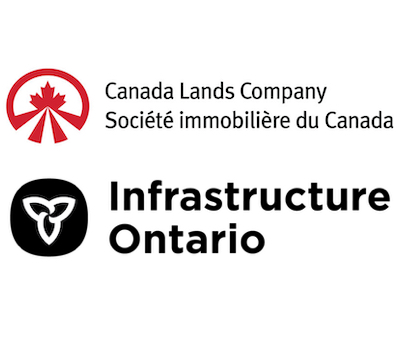 PART I: Demand for better utilization of public land is growing, and representatives from four bodies responsible for such portfolios talked about their strategies during a recent webinar presented by Urban Land Institute’s Toronto chapter.
PART I: Demand for better utilization of public land is growing, and representatives from four bodies responsible for such portfolios talked about their strategies during a recent webinar presented by Urban Land Institute’s Toronto chapter.
“Land is an increasingly scarce resource and the real estate market is hotter than it’s ever been,” panel moderator and Urban Strategies Inc. partner Cyndi Rottenberg-Walker explained as she introduced the presentations.
“Public sector budgets are under tremendous and growing pressures, but these public bodies often own very well-located land assets, so many of which have become surplus to their core needs. All of that sounds like a perfect match of need and opportunity.”
Following is information about two of the major stewards of Canada’s public lands, along with discussion about some of their properties and their strategies to utilize the assets. Tomorrow in Part II, we’ll examine CreateTO and Toronto Lands Corp.
Canada Lands Company
Canada Lands Company has offices across the country and manages publicly owned properties from coast to coast. It’s responsible for repurposing former federal government lands to optimize their financial and community value.
Acting regional director of real estate James Cox focused on two projects in the Greater Toronto Area (GTA).
The first is 1 Port St. E. in Mississauga’s Port Credit neighbourhood, on Lake Ontario and along the east side of the Credit River. It was at one time used for shipping container purposes, but for the last 40 years has been leased out for marina, boating and recreational uses.
The site, acquired by Canada Lands from Fisheries and Oceans Canada in 2011, is industrial in nature, under-utilized and precludes public access.
Canada Lands convened stakeholder and community meetings as part of initiating a master plan. It also entered into a transaction with the City of Mississauga, under which it has an opportunity to secure the land and water lot needed to own and operate a future marina.
The approved master plan supports redevelopment to accommodate: a harbour; a mixed-use site largely comprised of mid-rise buildings; opportunities for taller elements with a landmark building; some taller elements on Fourth Street; affordable housing; a waterfront trail; and new public parks.
It will provide upwards of 1,500 residential units and approximately 200,000 square feet of commercial space.
Cox’s second example is the William Baker neighbourhood in Downsview, a 62-acre site between Downsview Park and the Toronto Transit Commission’s Downsview Park subway station and GO Transit station.
It used to be occupied by military homes, which have now been demolished, and also features a woodlot with walking trails that Canada Lands opened to the public.
Applications have just been submitted to the City of Toronto for a district plan for a compact urban neighbourhood with a community centre, affordable and seniors housing, medical offices, retail and commercial services, while also retaining some of the woodlot.
Infrastructure Ontario
Infrastructure Ontario provides services for managing and building public infrastructure, provides loans, creates commercial solutions with the private sector, and deals with the province’s general real estate portfolio, which is one of the largest and most diverse in Canada.
“We have 4,500 buildings in over 450 cities,” said real estate transactions director Kayann Fernandes, who has divested more than 5,500 acres of land that have generated more than $120 million in revenue across the province.
“That equates to 42.5 million rentable square feet. And above and beyond the buildings, we have over a million acres of land throughout the province. We’ve got old jails, psych hospitals, hydro corridors, parklands, golf courses, you name it.”
Providing public services through its real estate is integral to Infrastructure Ontario, Fernandes said. And while the portfolio is large, elements of it need to be modernized.
Infrastructure Ontario’s accelerated divestment plan includes more than 350 properties to sell. The goal is to collect more than $130 million while reducing liability and bringing surplus lands back to productive use to generate revenue.
Infrastructure Ontario attempts to repurpose government land through a three-step process before it’s offered on the open market for market value. The first step is to see if any other provincial ministries or agencies need it.
If they don’t, the ministries and agencies will be asked if it can be utilized for non-direct uses.
The third step is seeing if there’s interest from federal or municipal governments, non-profit groups, colleges and universities, school boards and eligible Indigenous communities. It will then be put on the market if there are still no takers.
“We make sure it’s an open, fair and transparent process and we list for 45 days, giving everyone a chance to bid,” said Fernandes.
She said there are currently two GTA properties on the market for which the province is willing to give up revenue in exchange for the construction of long-term care facilities.
“It is very important for the province to generate revenue,” she concluded, “but there is also a balance in other important endeavours for the province. So, for example, long-term care is a very important initiative right now.”
TOMORROW: In Part II of this look at public lands utilization strategy, the presentations zero in on Toronto and the GTA, exploring CreateTO and the Toronto Lands Corporation.











